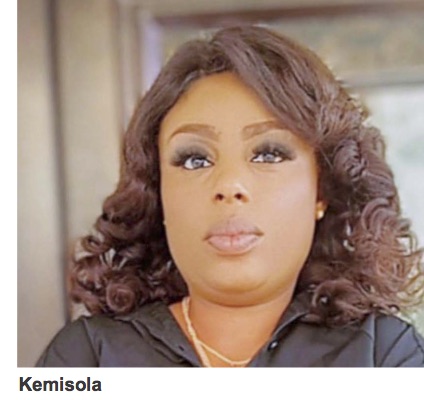As part of activities commemorating the 2023 International Women’s Day, with the theme Innovation and Technology for Gender Equality, Juliana Taiwo-Obalonye caught up with the CEO of Femwear Technologies and president of Women in ICT Foundation, inventor of a wearable smart bra for cancer screening and early detection, Bolarinwa Kemisola, at the ministerial briefing by the Minister of Women’s Affairs, Pauline Tallen, to kickstart the women’s month .
She spoke on her STEM journey and why the gender gap in innovation and technology needs to be bridged.
Excepts:
What in particular does the women’s month mean to you in light of this year’s subject of innovation and technology?
I am so happy with this year’s theme which is talking about women inclusion in STEM (science technology, engineering and mathematics) generally. It’s no news that there is a gender gap in innovation and technology. Women continue to be underrepresented in this field. The gender gap is an issue that needs to be addressed urgently because it has significant consequences, not just for women, but for society as a whole.
To close the gender gap in innovation and technology, we must work together to create an inclusive environment. We need to encourage more girls and women to pursue STEM careers, and we need to provide them with the necessary support and resources to succeed.There is gender stereotyping in STEM that it’s meant for boys but that is not true. We have to change the narrative and that is what we are doing in Women in ICT. We are encouraging the girl child to have interest in STEM, and push for the inclusion of women in the STEM fields. This challenge of women in STEM is a global one not just restricted to Nigeria. We have few women representatives in STEM fields. So there’s the need for women to encourage women to participate in STEM, we need more inclusion. To achieve this, we feel it should be taught from the grassroots, that is making that young girl see STEM as something she can do.
Women bring a unique perspective to innovation and technology, and their contributions can lead to better, more inclusive solutions.I believe these will bridge the gap and increase the inclusion of women.
What triggered your interest in STEM?
Growing up, I wanted to do the things tagged boys’ things even though they were challenging. I climbed buildings and ladders like the boys; I was always insisting on doing my things by myself. I recall my time in high school, at St. Helen’s Unity Secondary School, Ondo, when, together with my friend, Dr. Tope Salawu, we created the transistor radio for the inter-school competition. Watching that radio work ignited a passion in me; I knew from that day that I would be an inventor.
I was an active member of the Junior Engineers, Technicians, and Scientists club (JETS). I attended an all-girls school, and usually when we went for inter-school JETS club, the boys made it seem like girls were not intelligent enough, as if maths and physics were created for boys alone or maybe they understood it better than girls. But I have always believed in my abilities and equal opportunities.
After secondary school, I studied Electrical and Electronics Engineering at the University of Ado-Ekiti and, during my time there, I became interested in robotic engineering despite the challenges involved. There was a pattern for most women to give up in my engineering class; when we started as freshmen, there were 11 women, but only seven of us were left before graduation.
What is this buzz on wearable smart bra all about?
In 2017, I lost one of my favourite aunts to breast cancer. I recall seeing several women lying in pain while visiting my aunt at the University of Ibadan Teaching Hospital. That day, I committed myself to finding a solution to breast cancer. I boldly walked up to the doctor to ask, “How can we prevent this cancer from spreading?” Watching the women broke my heart, especially the young girls; the pain, helplessness, and resignation were too much for me. We all need to stop this disease that is causing so much suffering, not just for the sick, but all those around them, caregivers and even doctors. During the conversation with the doctor, I learnt that nine out of 10 women survive breast cancer with early detection. That was how I decided to take up that challenge.
I am doing this for women, and for me too. We must check the breasts regularly, since early detection is the solution; we need to make cancer screening accessible.
Smart bra is a device that will help women detect the earliest stage of breast cancer. It is a device that uses ultrasound technology. For a lay person’s comprehension, it’s like bringing an ultrasound machine inside the bra where you can get your result in the comfort of your home without visiting an oncologist or a stenographer for your result analysis. You get your result and you know your status.
In 2019, I teamed up with a femwear expert, an IT expert, an embedding hardware expert, an AI expert, a software developer, and an oncologist. Together, we embarked on a journey to find a solution to the late detection of breast cancer and came up with a smart bra. We have done the first and second prototype and are currently working on the third prototype and after this we will move to clinical trials and then get the certification before moving to the production stage before we can commercialise the product.
Let me explain further, in 2021, I and my team came up with a working prototype of a smart bra which has sensors to scan the breast for abnormalities. Inside the smart bra are seven sensors strategically placed across each bra cup, connected via cables to a USB output. The USB output connects the bra to a computer or mobile app, where software accesses the data and scans for anomalies. A specialist can then interpret these readings.
In the first clinical trial we embarked on to validate the clinical concept, we used 15 women we recorded about 87 per cent accuracy.
From the 15 women we tested, three came out with abnormalities which we referred to the hospital for proper diagnosis. We have ordered more developed sensors that will boost the product accuracy to about 98 per cent.
With the update, we hope to have a minimum viable product for clinical trials to international standards. So we are clear, the smart bra is not meant to replace mammograms but rather help those who cannot easily access mammograms or get them done regularly.
What are the challenges?
The number one challenge is lack of resources. All the materials we are using are not sourced locally, we get them from abroad. The exchange rate is killing and these are the major obstacles we have with development. We have so far spent over $100,000 to develop the smart bra and we intend to raise additional $1 million to expand the team and build out the production line.
Have you been able to overcome them?
No. Not that we have totally overcome it but we just have to play along because there is nothing I as a person can do about the exchange rate. The smart bra is all about finding solutions to problems and inspiring the female gender to break the bias that curtails her potential. I have had people abroad who want to buy off the smart bra technology to test breast cancer I invented; I am not selling it, we are mass-producing it from Nigeria for other countries to buy; for the first time, they should buy from Africa. Our product is not for export.
Is the smart bra the only thing you have invented?
No. I have developed smart security necklaces that use GPS to track family members and alert families when the wearer feels they are in danger. We are now converting it to smartwatches to be gender-inclusive and can send pictures of the environment where family members are in the case of danger, since the device has a panic button.
We are currently working on improving the efficiency of the device to perform the same functionalities of an ultrasound machine. Enabling users to view real time image of their scan via the app.
As president of Women in ICT Foundation, how many women have you trained so far?
We have initiated and carried out so many programmes to support women, over 1,850 women have passed through our training and we are proud to say they are doing fine in their various fields now, irrespective of the fact that they had zero experience in ICT. We believe that your background doesn’t determine the kind of digital skill set you get into. Whether you are a lawyer or whatever, it doesn’t stop you from acquiring the skill. It cuts across every background. And for the girl child, we go to schools and through what we call Hands-on, the girls’ interest have been kindled because they see in practical terms what they are being taught in school and they now want to choose their career paths in STEM fields.
Why do you want to train 1,500 female civil servants in ICT?
When you look at Nigeria’s ecosystem, you will see that the civil servants are used to the old way of doing things. We want to wage in since we are preaching equality, we want them to acquire the skill to be able to be productive in their various offices and be efficient in their work. There is a need for female civil servants to acquire these skills because we are in the fourth Industrial Revolution whereby everything is being done via the computer and those not equipped are scared. When you approach a typical civil servant and mention computer, the fear is that they will lose their jobs but that is not true. Computer is not taking your job but to make you efficient in service delivery. It will create more jobs but if you don’t upscale yourself with digital skills then you will get yourself out. We are moving to the fifth Industrial Revolution and it’s important we get the necessary tools to embrace that.
Are you going to move from one MDAs to the other to get the women to participate in these training?
There’s something called ‘charity begins at home’. We are starting the training with the ministry of women affairs. We are not picking randomly, we will move from one ministry to the other. This will be in conjunction with the ministry because they will have to bring something on the table like providing us with the training spaces because this is free of charge. As an NGO, we are contributing our own quarter to the development of the country and to the cause of inclusion of women in ICT. We hope to collaborate with more partners in public and private sector to get this done.
What is your message for girls and women who seek career paths in STEM (Science, Technology, Engineering and Mathematics)?
My message is to believe in yourself, they should not let anyone including yourself tell you that you can’t do something. Believe that you have what it takes to succeed in STEM. Remember, you have the ability to succeed in STEM. Don’t let doubts or fears hold you back. Keep working hard and pursuing your passions, and you will be amazed at what you can accomplish. I believed in myself and that is why I am where I am today.










